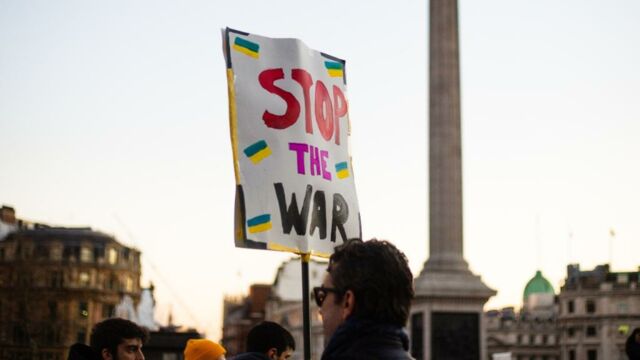After Russia's invasion of Ukraine, there is a lot of uncertainty about how this war might end. While it's impossible to predict, here are three potential scenarios that have been outlined by sources such as BBC, The New York Times, and The Atlantic.
Discover our latest podcast
A short war in favour of Ukraine
This would be a miracle but there is some hope. The global community has been quick to condemn the invasion, with protests around the world and across Russia. There are mounting sanctions being imposed, and a widespread boycott. Russia’s stock market has collapsed and its currency has crashed. Russian celebrities are speaking out and oligarchs are suffering.
Dialogue remains open. French President Emmanuel Macron has spoken to President Vladimir Putin on the phone. Russian and Ukrainian officials have already met for talks on the border with Belarus. By accepting the talks, Putin seems to at least have considered the possibility of a negotiated ceasefire.

With defensive assistance from NATO members, Ukraine’s military and civilian resistance are able to halt Russia’s advance. There is a stalemate. Soon, Putin realises that Russia will pay a high price for its actions—including the possibility of a long and costly war in Ukraine, as well as economic collapse and diplomatic isolation. Putin withdraws his troops. Ukraine remains a sovereign democracy.
A short war in favour of Russia
Russia increases its military operations with more random artillery and rocket strikes across Ukraine. The Russian air force plays a bigger role, launching devastating airstrikes. There are huge cyber-attacks across Ukraine, targeting key national infrastructure. Energy providers and communications networks are disconnected.
Despite brave resistance, Kyiv is captured within days. A pro-Moscow puppet regime replaces the government. President Volodymyr Zelenskyy is either assassinated or flees overseas in exile. Putin declares victory. Like Belarus, Ukraine becomes a client state of Moscow.
Read more:
⋙ War in Ukraine: Here are the top 6 boycotts of Russia
⋙ War in Ukraine: This is how members of the Royal Family have reacted
⋙ War in Ukraine: Here's how you can help in the ongoing crisis
A long war...
It’s perhaps more likely that this develops into an extended war. Russian forces falter, suffering from low morale, poor logistics, and inadequate leadership. It takes longer than anticipated for them to secure cities like Kyiv, which is being bravely defended. A long siege begins.
After weeks of intense combat in Kyiv and other major cities, Russian forces are able to achieve some presence in Ukrainian cities. Perhaps they manage to topple Kyiv’s democratic government and establish a puppet regime.

However, they struggle to maintain control. Russia is not able to provide enough troops to cover the entire country. And Ukrainians are not ready to surrender, launching an effective insurgency.
They are highly motivated, well-coordinated, and supported by local populations. The insurgents are also receiving external support, well-armed thanks to the West continuing to supply weapons and ammunition, and NATO countries providing defensive assistance.
The Ukrainian resistance has a significant, sustained human and financial cost for Russia—which has to devote a lot more resources over a far longer period of time than expected. While Ukraine’s forces might diminish over time, and while major cities such as Kyiv might be occupied, Russia’s victory has taken a toll.
After many years, with Moscow’s resources and resolve drained by the conflict, and perhaps with new leadership in Moscow, Russian forces are finally forced to withdraw from Ukraine.















